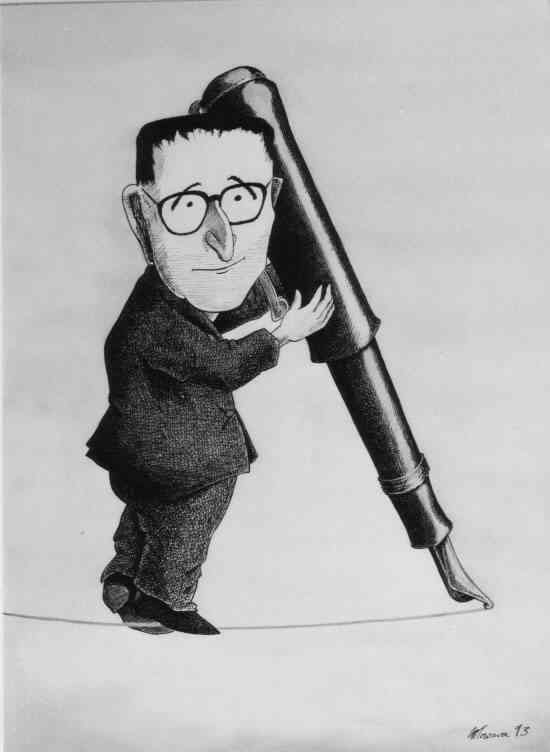| NAVIGATION Home PRACTITIONERS Artaud Berkoff Brecht Stanislavski |
Amadahn's Theatre Resources
Nationality: German Occupation: Playwright / Direct-orInfluences: Marxism / Pirandello / Meyerhold Key Words: Gestus / Verfremdungseffekt / Epic Theatre Texts: Baal / Mother Courage / Galileo Brecht’s approach to theatre was mainly political. He believed that it could be used as a tool to change people’s assumptions and that it could therefore change the world. He also wanted to encourage people to think about what was going on in the world, rather than just accept it. To achieve this, Brecht developed a style of theatre that was very different from anything else present at the time. Many components of this style are still used today. One of Brecht’s aims was to try to prevent the audience from ‘losing themselves’ in the performance, because by doing this they were submitting to outside forces. Brecht believed that people should have control over their own lives, and that this control should extend to the theatre too. Instead of experiencing this ‘loss-of-self’, the audience should be encouraged to assess and criticise whatever was taking place on stage. They should be actively critical rather than passively receptive. Brecht saw that a naturalistic performance style did not encourage an audience to be critical, so he developed a different kind of dramatic style that we now refer to as ‘Brechtian’. One of the most important aspects of this style was something that Brecht called Verfremdungseffekt. This is usually translated into English as Alienation Effect. It is a technique where the audience is constantly reminded that they are watching a theatrical performance rather than a slice of reality. This is achieved by repeatedly breaking the dramatic action through the use of slides, filmic clips, placards, and singing. Also, actors address the audience directly and step in and out of character as they do so. To further remind people that they were watching a theatrical performance, Brecht never tried to hide the mechanics of the theatre. Things like lights, ropes, and musicians that in a naturalistic play are usually hidden, would be in full view in a Brechtian play. He wanted to remove all traces of illusion from the theatre, and replace it with a dialogue between audience and performer.
Brecht is one of the most significant figures in the history of 20th Century theatre. His ideas have been particularly important in the development of theatre as a political force. The Brechtian performance style stands in sharp contrast to the naturalistic trend that grew from Stanislavski's ideas and, by seeking to engage the minds of the audience instead of their emotions, also conflicts with Artaud's theories. Brecht reminds us that we can change the world, but only by being active participants rather than passive spectators. The actors are at hand and by their showYou shall know all that you are like to know... A Midsummer Night's Dream
|

